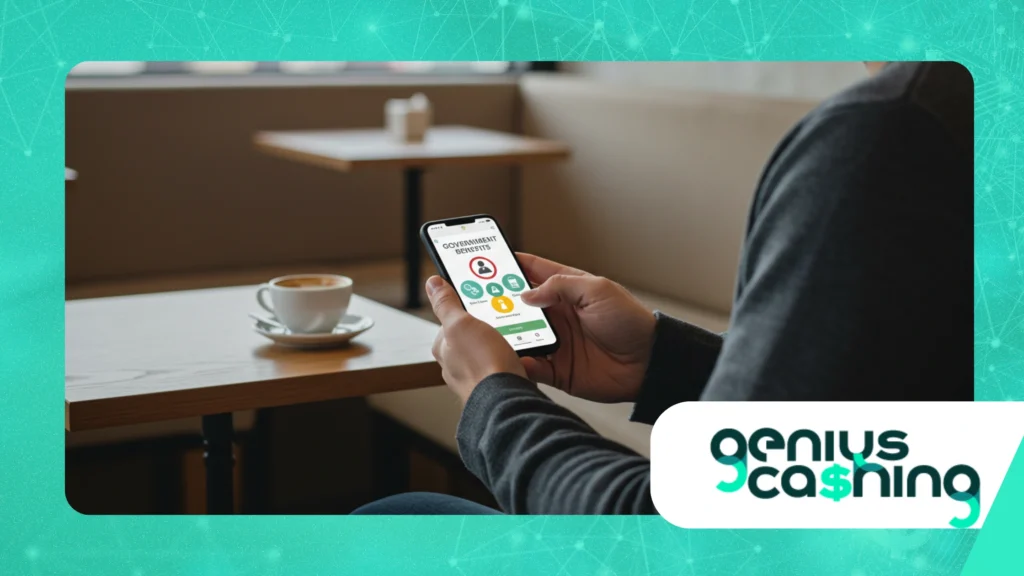How to Calculate the “True Value” of Government Assistance

Understanding the true value of government assistance is more than tallying checks or vouchers it’s about measuring real-world impact.
Anúncios
Government benefits, from food stamps to housing subsidies, aim to stabilize lives, but their worth varies by individual circumstances, program structure, and economic context.
In 2025, with rising costs and evolving policies, grasping this value is critical for recipients and policymakers alike.
This article dives into practical steps to evaluate these benefits, weaving in economic realities, personal stories, and actionable insights. We’ll explore how to assess what these programs truly deliver, ensuring you see beyond the dollar signs to their deeper significance.
Why does this matter? In an era of inflation and shifting social safety nets, knowing the true value of government assistance empowers informed decisions.
Anúncios
Whether you’re a recipient, advocate, or curious citizen, this guide offers clarity. We’ll break down methods to quantify benefits, consider hidden costs, and highlight real-life impacts, all grounded in current data and authentic examples.
Understanding Government Assistance in 2025
Government assistance spans programs like SNAP, Medicaid, housing vouchers, and unemployment benefits. Each targets specific needs nutrition, healthcare, shelter, or income support.
In 2025, the U.S. Department of Health and Human Services reported that over 59 million Americans accessed some form of federal aid, a figure reflecting post-pandemic recovery and economic pressures.
But the true value of government assistance isn’t just in its reach it’s in how it translates to tangible outcomes.
++ The Benefits Cliff: How Small Income Increases Can Cost You Big
These programs operate within a complex web of eligibility rules and funding constraints. For instance, SNAP benefits adjust with inflation, but regional cost-of-living differences can erode their purchasing power.
A family in rural Ohio might stretch their benefits further than one in San Francisco. Understanding this context is the first step to calculating real value.
Beyond numbers, assistance shapes lives in nuanced ways. Consider Maria, a single mother in Texas, who uses SNAP to feed her kids.
The $500 monthly benefit covers groceries, but its real worth lies in the stability it provides her children eat regularly, freeing her to focus on job training.

Step 1: Quantify Direct Financial Benefits
Start by listing all benefits received. For SNAP, check monthly allotments; for housing, note subsidy amounts. Summarize these in a clear table for accuracy. The true value of government assistance begins with raw numbers but doesn’t end there.
Table: Average Monthly Benefits (2025, U.S. Federal Programs)
| Program | Average Monthly Benefit | Source |
|---|---|---|
| SNAP | $285 per household | USDA, 2025 |
| Medicaid | $450 (estimated care) | CMS, 2025 |
| Section 8 | $900 (varies by city) | HUD, 2025 |
| Unemployment | $400 (state-dependent) | Dept. of Labor, 2025 |
Next, compare these amounts to your actual expenses. If SNAP covers 80% of your grocery budget, that’s a direct savings. But don’t stop at face value factor in inflation and local costs.
For example, John, a retiree in Florida, receives $200 monthly in SNAP. With grocery prices up 3% in 2025, his benefits buy less than last year. He tracks expenses to see if the aid truly offsets his costs.
Also read: How to Use Government Benefits to Offset Startup Costs
Step 2: Assess Indirect Benefits
Direct cash or vouchers are only part of the story. Indirect benefits like time saved or opportunities gained add to the true value of government assistance. Medicaid, for instance, covers medical costs, reducing financial stress and enabling better health outcomes.
Consider how benefits free up resources. A housing voucher might lower rent from $1,500 to $500 monthly, letting you save or invest elsewhere. This ripple effect boosts long-term financial health, often overlooked in simple calculations.
Take Sarah, a Chicago teacher using a housing voucher. The $1,000 monthly savings lets her enroll in a master’s program, increasing her earning potential. This indirect benefit education access amplifies the program’s value beyond the dollar amount.
Read more: Business Subsidies: What No One Tells You About the Fine Print
Indirect benefits also include peace of mind. Knowing medical bills are covered or food is secured reduces anxiety, which studies link to improved productivity. Quantifying this is tricky but vital for a full picture.
Step 3: Factor in Hidden Costs and Trade-Offs
No program is perfect hidden costs can erode the true value of government assistance. Administrative hurdles, like reapplying for benefits, demand time and energy. Some programs require work or training, which may clash with existing obligations.
For instance, unemployment benefits often mandate job search documentation. This can take hours weekly, time that could be spent earning or upskilling. In 2025, 30% of recipients reported delays in benefit processing, per a Department of Labor study, adding stress and uncertainty.
Eligibility cliffs also pose challenges. Earning slightly above a threshold can cut benefits drastically, leaving families worse off. Maria, our Texas mother, faced this when a raise reduced her SNAP benefits, forcing tough budget choices.
These trade-offs don’t negate assistance but must be weighed. Track time spent on applications or compliance to gauge their impact on your life and finances.
Step 4: Evaluate Long-Term Impact
The true value of government assistance often shines in its long-term effects. Programs like job training or education grants can break cycles of poverty.
A 2024 Urban Institute study found that every $1 in SNAP spending generates $1.54 in economic activity, showing broader societal benefits.
For individuals, long-term gains vary. Unemployment benefits might bridge a gap to a better job, while Medicaid ensures health stability for work readiness. Consider how assistance shapes your future, not just your present.
John, the Florida retiree, used Medicaid to manage a chronic condition, avoiding costly hospitalizations. This kept him active, volunteering, and socially engaged outcomes no dollar amount captures. Long-term impact hinges on how benefits align with your goals.
Another angle is generational impact. Assistance that stabilizes a household, like housing aid, can improve children’s educational outcomes, creating a ripple effect across decades. Evaluate how benefits position you or your family for future success.
Step 5: Personalize Your Calculation
Every situation is unique your context shapes the true value of government assistance. A single metric, like dollars received, ignores personal needs and goals. Create a personalized formula: combine direct benefits, indirect gains, and subtract hidden costs.
Ask: How does this aid change my daily life? For Maria, SNAP means her kids eat nutritiously, boosting their school performance. For Sarah, housing aid unlocks career growth. Tailor your assessment to your priorities security, opportunity, or health.
Use tools like budgeting apps to track how benefits affect your finances. Compare pre- and post-assistance budgets to see real changes. This grounds the calculation in your reality, not abstract numbers.
Don’t forget emotional and social factors. Assistance might reduce stress or stigma, or it might carry bureaucratic frustrations. Weigh these intangibles to ensure your evaluation reflects your lived experience.
The Broader Context: Society and Assistance

Government assistance doesn’t exist in a vacuum it’s shaped by policy, economy, and societal attitudes. In 2025, debates over funding and eligibility intensify as budgets tighten. Understanding this context clarifies why benefits vary and how to maximize their value.
Programs are often under scrutiny, with critics arguing they foster dependency. Yet, data shows most recipients use aid temporarily 68% of SNAP users exit within two years, per USDA. This counters myths and highlights assistance as a bridge, not a crutch.
Public perception also affects value. Stigma can deter eligible people from applying, reducing access to aid. Advocacy for clear, shame-free communication about benefits can enhance their reach and impact.
Economic trends, like inflation or job market shifts, further influence value. In high-cost cities, benefits may fall short, while in rural areas, they stretch further. Contextualizing your calculation ensures it reflects these realities.
Practical Tips to Maximize Benefits
Maximizing the true value of government assistance requires strategy. Start by staying informed—check USA.gov for updates on program changes. In 2025, new tools like the redesigned USA.gov benefit finder simplify eligibility checks.
Apply early and accurately to avoid delays. Maria learned to submit SNAP renewals promptly, avoiding gaps in coverage. Use online portals for efficiency and track application statuses.
Seek complementary resources. Local nonprofits often supplement government aid with food banks or job programs. Combining these can amplify the overall impact of assistance.
Finally, advocate for yourself. If benefits seem insufficient, contact program offices or local representatives. Sarah successfully appealed a housing voucher reduction, securing her financial stability.
An Analogy to Tie It Together
Think of government assistance like a lifeboat in a stormy sea. The boat (benefits) keeps you afloat, but its value depends on your ability to navigate steering through eligibility rules, avoiding bureaucratic waves, and reaching your destination (stability or opportunity).
The true value of government assistance lies in how well you use it to weather the storm and chart your course.
Conclusion: Your Path to Clarity
Calculating the true value of government assistance is a journey, not a formula. It’s about blending numbers with lived experience dollars saved, stress reduced, futures brightened.
In 2025, with economic pressures mounting, this calculation is more vital than ever. By quantifying direct benefits, weighing indirect gains, and accounting for hidden costs, you uncover a clearer picture.
Maria’s grocery stability, John’s health security, and Sarah’s career leap show that value transcends money it’s about life-changing impact.
Take time to assess your benefits with intention. Use tools, track outcomes, and stay proactive. What’s stopping you from unlocking the full potential of these programs?
The answer lies in your hands start calculating today, and turn assistance into opportunity.
Frequently Asked Questions
Q: How do I know if I’m eligible for government assistance?
A: Visit USA.gov or contact local agencies to check eligibility. Tools like the 2025 USA.gov benefit finder simplify the process.
Q: Can benefits really make a long-term difference?
A: Yes, programs like SNAP or housing aid can stabilize finances, improve health, and open educational or job opportunities, per Urban Institute data.
Q: What if my benefits don’t cover my needs?
A: Appeal decisions, seek local nonprofit support, or contact representatives. Combining resources, like food banks, can bridge gaps effectively.
